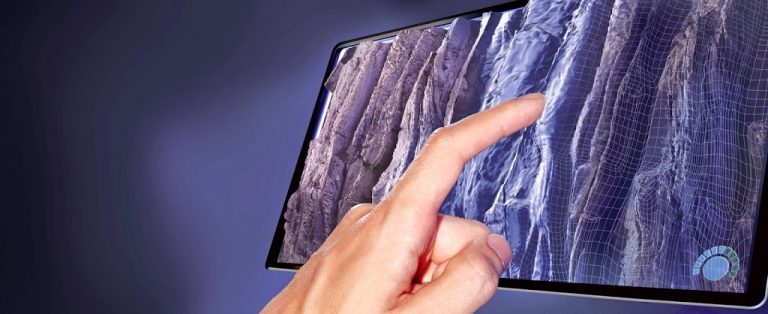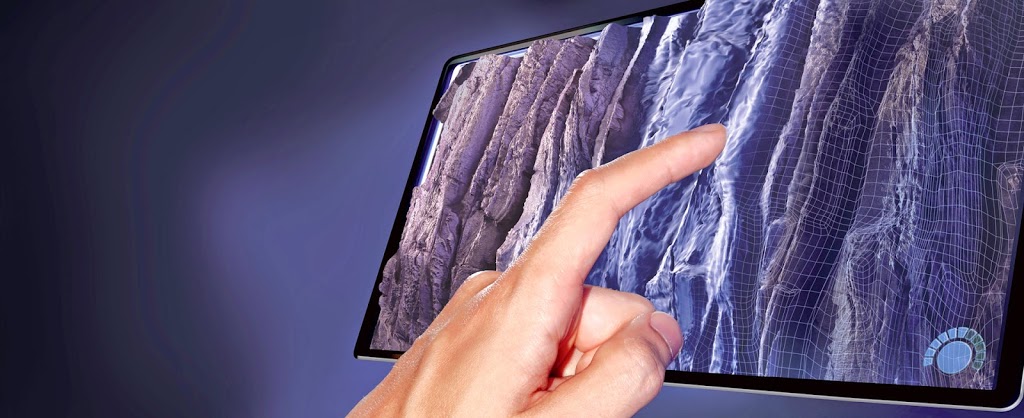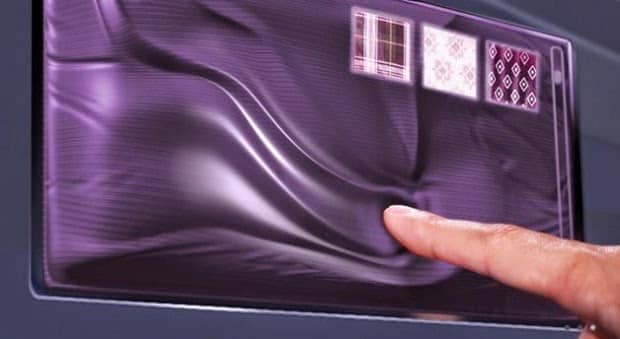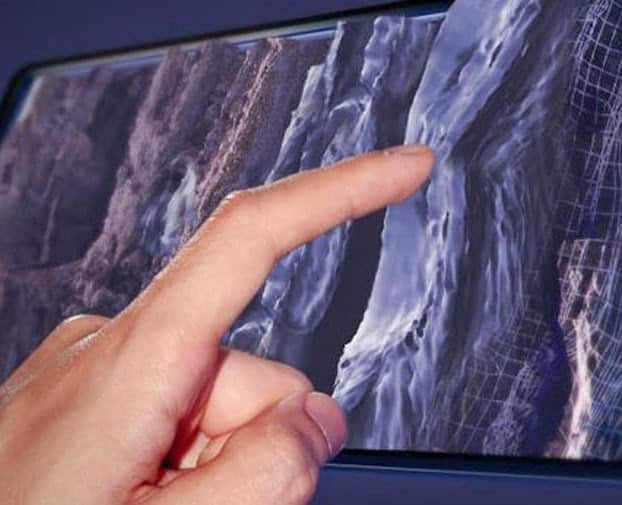Researcher Hong Tan found that using so-called haptics to add tactile sensations to screens can have some concrete benefits. For instance, by adding a keyboard-like “click” feeling to a Surface keyboard cover, one study showed that subjects could type faster and more accurately on it. Other potential uses include enhanced interfaces that let you feel resistance when you move a folder on the screen, or the ability to feel “textures” like rough cloth on a screen. Simple haptic interfaces have been used in cell phones for years, to create silent alerts or provide limited tactile feedback when an onscreen button has been pressed. But such interfaces typically rely on elliptical vibration motors to create a shaking sensation, an approach that is slow and imprecise. Immersion believes this can be greatly improved by switching to a piezoelectric actuator.
Piezeoelectric materials produce mechanical stress in response to an applied voltage, or vice versa. They do this at great speed, which means piezoelectric actuators can respond quickly when a screen is being touched, says Steve Kingsley-Jones, Immersion’s director of product management. A prototype device featuring the technology was demoed two weeks ago at theMobile World Congress in Barcelona, Spain. When activated, a piezoelectric strip placed along one edge of a touch screen causes the screen to move from side to side, a slight movement that is felt by a finger touching the screen. A suspension system holds the screen in place, ensuring that the case does not move.
Of course, Microsoft isn’t the only company working on new forms of haptic feedback. Disney Research launched their own technology named TeslaTouch back in 2010 that creates a broad range of tactile sensations on touchscreens. This kind of technology has the potential to revolutionize our sensory experience of the internet—and touchscreen games—by making virtual environments far more evocative and emotional. Imagine if shoppers could feel the fabric of a dress they found online, or reach out and pet a picture of a puppy. The potential is great for shoppers, educators, and general users alike. It will boom the tech market for sure




